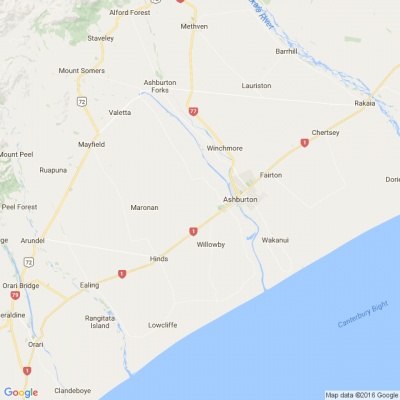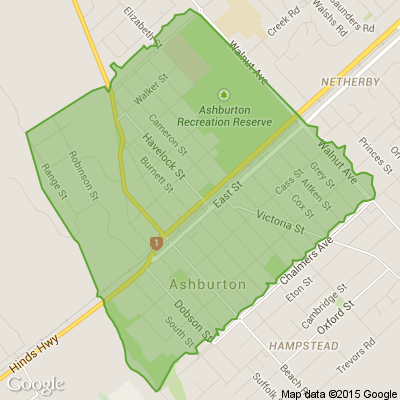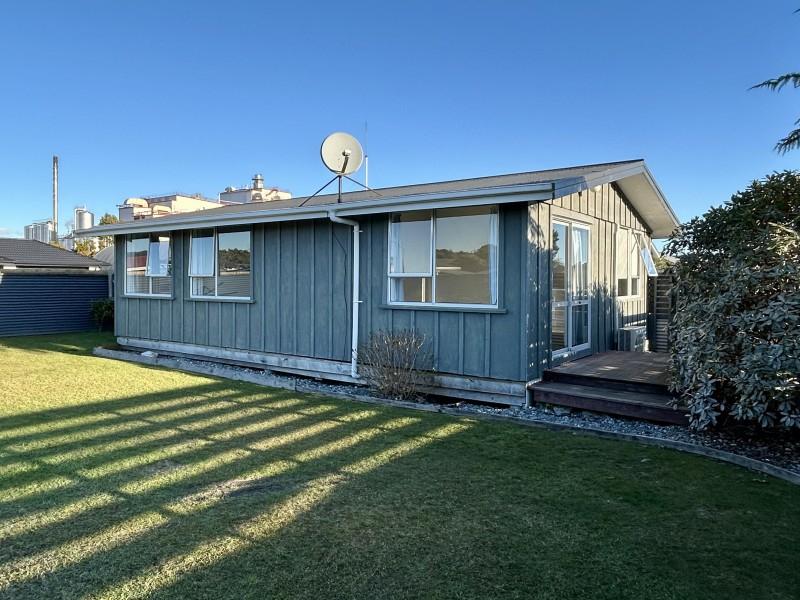Conserve or restrict: Ashburton council’s water warning
By local democracy reporter Jonathan Leask:
Residents living in the Ashburton District have been warned to start using water wisely or face restrictions.
Canterbury is "staring down the barrel of a fairly dry summer”, but people are watering their gardens in peak times, putting pressure on the system, officials say.
The Ashburton District Council has signalled water restrictions are a real possibility unless usage habits change.
Ashburton’s seven-day rolling average daily water use has been above 22,000m3 three times in the past few weeks, a high level of use has which has put pressure on the system.
During the hot and windy weather over the weekend the consumption was around 16,000 cubic metres in Ashburton on both days.
Council staff said it’s not a supply issue, it’s a volume issue, with the people using a lot of water simultaneously causing low-pressure problems.
Mayor Neil Brown said households need to avoid excessive use during peak times or risk restrictions.
“If we need water restrictions to keep the level of service up, then we need them.”
Group manager of infrastructure and open spaces Neil McCann said water restrictions hadn’t been issued on the Ashburton scheme for a few years.
“We’re concerned right now about levels of service and complaints about low pressure.
“The time period from 5pm to 9pm is typically when demand increases significantly partly due to people watering their gardens and lawns.
“We also see people watering their lawns in the middle of the day, which is also not a good time as most of the water evaporates.
“We would like people to conserve water through smart use, so everyone has the water they need.”
Asset manager Andy Guthrie had raised the issue at the first-ever Three Waters Committee meeting on Thursday, signalling to councillors restrictions are a real possibility this summer.
It’s early in the summer period and the Ashburton scheme is already suffering from low-pressure issues, which Guthrie said he was “almost certain” was caused by people watering lawns and gardens in the peak evening period.
He warned unless consumption habits change, restrictions would need to be introduced.
“It’s a district-wide message. We are staring down the barrel of a fairly dry summer.”
The Mt Somers intake is already getting low and will need to be managed carefully over the summer, Guthrie said.
It’s a similar situation for the Methven supply, which also has a river intake.
Previously the trigger point for introducing restrictions was a rolling 7-day average of 15,000 cubic litres per day.
the latest seven-day average was over 20,000, Guthrie said.
The consent limit is 25,000 cubic litres per day.
Like Ashburton, the Selwyn District Council issued a notice encouraging people to use water wisely, following a significant increase in peak usage each day last week.
Council executive director infrastructure and property Tim Mason believed there had not been water restrictions in Selwyn before.
“If water use continues to increase beyond the levels it did during the last week, we could be reaching the conditions set down by the Council where restrictions are required on some schemes," Mason said.
Water use comparison:
The average daily water use per person in the Ashburton District is 838 litres per person – based on data from the 2023-24 year.
It’s a measure of water leaving the various water treatment plants, and includes rural schemes that also deliver piped stockwater, and any unaccounted-for water (such as illegal connections, unauthorised consumption like the filling of tankers, and losses through the network and on private property).
In the Selwyn District, the average litres per person was around 650L last week in the main urban areas (Darfield, Leeston, Lincoln, Prebbleton, Rolleston, Southbridge and West Melton), which triggered a water conservation message.
In comparison, Napier City Council hit the headlines last week when it claimed its water use was higher than most other place, with an average of between 500 and 570 litres of water per person per day.
It had a record day for water consumption in November of 637 litres per person and is on level 3 water restrictions (hand watering on alternate days).
Just 20km away, Hastings has an average of 634L per person in 2024 – with a peak of 973L per person on November 9, and is only on level 2 restrictions (alternate days).

Scam Alert: Fake information regarding December Bonuses from MSD
The Ministry of Social Development is reporting that fake information is circulating about new ‘December bonuses’ or ‘benefit increases’
If you get suspicious communication, please contact Netsafe.

Further important update to all Neighbourly members
Dear Neighbours,
We wanted to update you with what we have uncovered in regards to the potential Neighbourly data breach which we were alerted to on Thursday January 1.
Over the past few days we have worked to understand whether our members’ data had been accessed without authorisation and, if so, the extent of the breach.
We have now confirmed that there was a breach of some data from our registered users. We are now satisfied that the breach was quickly contained, and we have restored the Neighbourly site and services.
Our investigations have shown that there was unauthorised access of Neighbourly data, which included our registered members’ names, email addresses, GPS coordinates, forum posts and member communications. It did not include passwords but some publicly advertised event and business addresses were included.
Following best practice, we will look to seek a court injunction against any use of the material.
We want to apologise to our members for this occurrence and any concerns it may have caused you over the past few days. We have, of course, addressed the issue that allowed the theft to occur, and we are satisfied that the site is secure for use by all of our members. We will work closely with all our staff to ensure we have the most robust processes in place to prevent it from happening again.
Thank you to our members who contacted us over this period and for the understanding you have shown as we work through the complex issues associated with cyber theft.
Q&A regarding Neighbourly data breach
The Team at Neighbourly








 Loading…
Loading…




